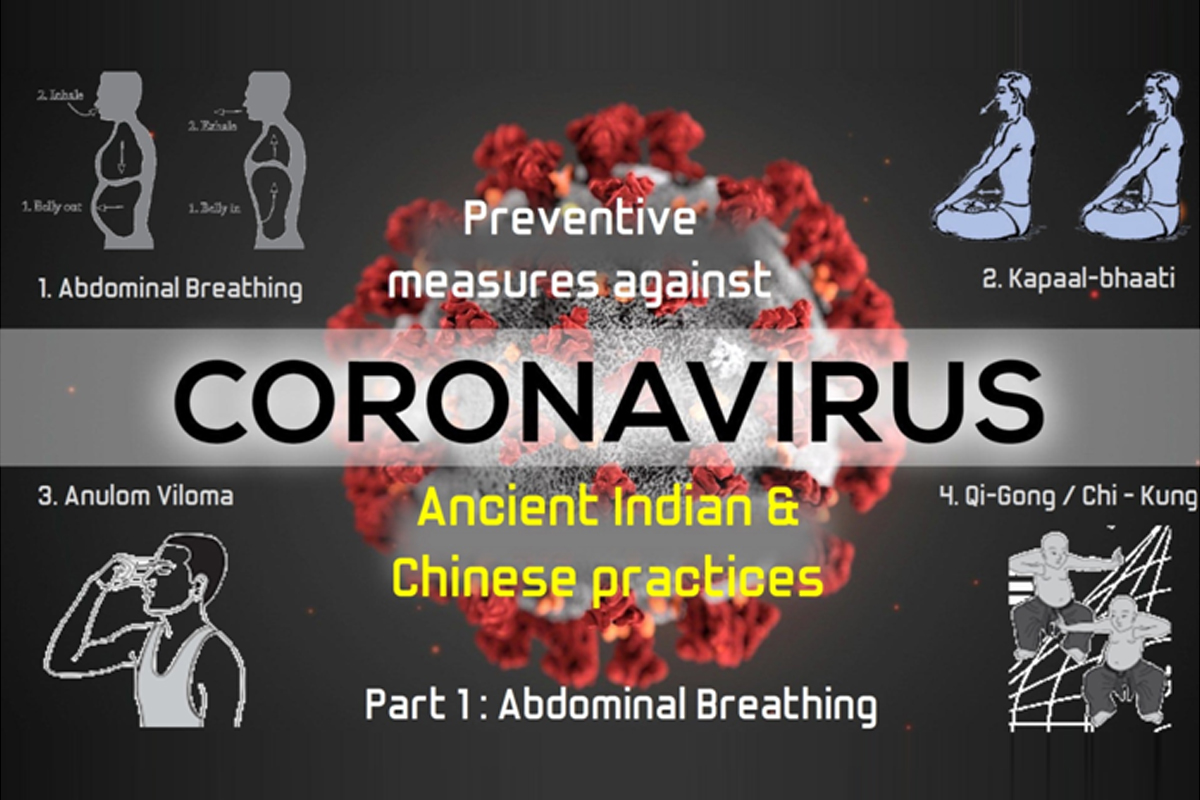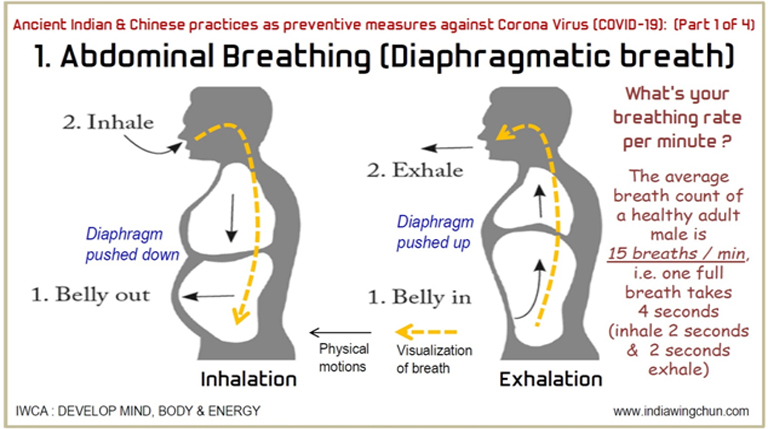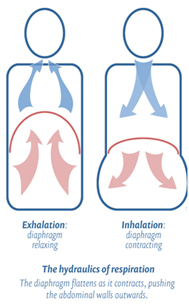External & Internal methods of Prevention against Corona virus
External preventive methods against Corona Virus: COVID-19 spreads from person-to-person (within 6 feet) and from respiratory droplets produced when an infected person coughs or sneezes. Most preventive measures against Corona Virus are externally focused i.e. clean your hands often, avoid close contact with people who are sick, cover coughs and sneezes, wear a facemask if you are sick etc. While external practices will help us to immediately prevent Corona infection, we must also develop ourselves internal resistance against Corona infection.
Internal preventive methods against Corona Virus: Strengthening of respiratory & immune system will not only help you fight COVID-19 but also give an overall sense of health and well-being. A healthy immune system reduces your chance of viral infection. Your respiratory system includes the nose, throat, windpipe and lungs. Here are few tips to build up your resistance –
Quick tips for strengthening respiratory & immune system:
- Stop smoking and stay away from secondhand smoke.
- Maintain a healthy weight by exercising regularly & eating a healthy, balanced diet.
- Lower stress levels by practicing yoga, meditation or deep breathing
- Eat more vegetables and herb supplements
- Try to sleep for 7–8 hours and avoid having an all-nighter
Ancient Indian & Chinese practices to strengthen your respiratory & immune system as preventive measures against Corona Virus (COVID-19):
Adopting the age old wisdom of ancient Indian & Chinese masters in your everyday life will help build up a resilient internal system. Few of the internal strengthening practices which can be made part of our daily routine are covered in this 4-part article series.
- Deep breathing: Abdominal Breathing
- Pranayama: Kapaalbhati
- Pranayama: Anulom Vilom (Alternate nostril breathing)
- Qigong: Yoga of Kung Fu – Ba Duan Jin (Eight piece of Brocade)
1. Deep breathing: Abdominal Breathing:
The average breath count of a healthy adult male is 15 breaths / min, i.e. one full breath takes 4 seconds (inhale 2 seconds & exhale 2 seconds). Most people breathe with the upper part of the chest resulting in shallow breath i.e. 18 to 22 breaths / minute. Abdominal breathing also rightly called as “Diaphragmatic breathing” utilizes the lower part of our lungs thereby increasing the lung capacity resulting in longer, fuller and deeper breath. Deep breath ensures that maximum capacity of the lung is utilized & better oxygen intake.





